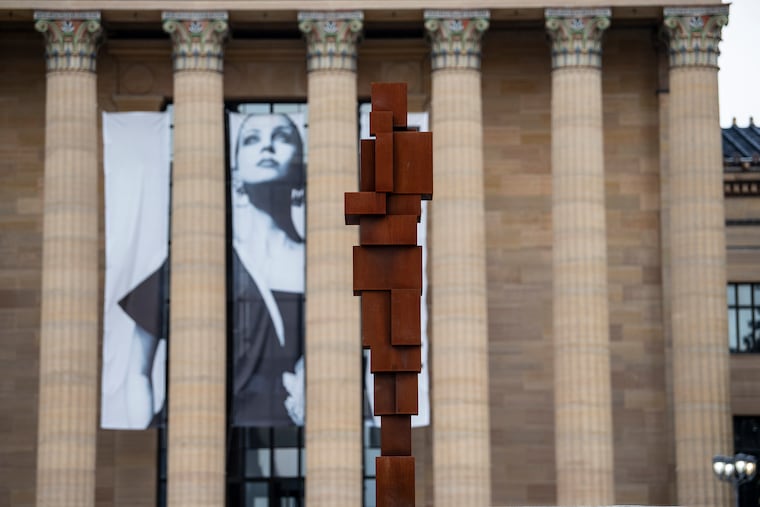A Philly Art Museum curator helped start a crowdsourced list of 2,500+ museum salaries
The spreadsheet, which features salaries from the Philadelphia Museum of Art, as well as from institutions across the globe, are a reminder that museums are workplaces.

Michelle Millar Fisher made the spreadsheet live on the last day of May.
In it, the Philadelphia Museum of Art curator and her collaborators, a group of anonymous museum workers, asked staffers at arts and culture institutions to anonymously share their salaries, family leave policies, and educational requirements for their positions, as well as their gender and race.
Now, it’s filled with more than 2,500 entries from workers all across the globe, from a department head at the Smithsonian ($156,000) to an intern at the Rijksmuseum in Amsterdam (250 euro a month) to a conservation fellow at the Philadelphia Museum of Art ($38,000). The Art and Museum Transparency team, as it calls itself, uploads new entries, submitted via a Google form, every day.
The spreadsheet is a way to tackle what the team called “the culture of silence and fear” among museum workers. Conversations about salaries and working conditions occur often among workers, but rarely at an institutional level, they said. The spreadsheet — a new iteration of worker organizing — is a reminder that museums are not just spaces for the public to experience art and culture, but workplaces.
“I’m a design curator, so sometimes the most simple, economical, and elegant way to do something is the most effective," Fisher said, describing the power in being able to “literally see collegiality and solidarity appearing cell by cell in the sheet."
A fledgling labor movement in the art world
The spreadsheet is another development in a growing labor consciousness among museum and cultural workers:
Employees from institutions such as the Brooklyn Academy of Music, the Guggenheim Museum, and the Frye Art Museum in Seattle have either recently voted to unionize or taken formal steps to announce their intentions of unionizing. The Professional Organization for Women in the Arts (POWarts) is about to release its own salary survey. During her keynote at the 2019 American Alliance of Museums conference, Kimberly Drew, a former social media manager at the Metropolitan Museum of Art who’s known for her Instagram account @museummammy, called out the Met as failing to prioritize pay equity amid its push to make the museum’s staff more diverse.
Art and Museum Transparency took inspiration from the POWarts survey and Drew’s speech, as well as the Adjunct Project, a crowdsourced spreadsheet started in 2013 to increase salary transparency among adjunct professors.
Museums are increasingly spotlighting inequity in their programming, but Fisher has written about how these exhibits fall flat if institutions aren’t addressing the issue with their own staff.
The team pointed out a number of conditions brought to light by the spreadsheet, including the prevalence of contractors or nonpermanent positions such as fellowships and project-based positions, the low wages ($30,000 to $40,000) for research assistant positions that require a master’s and sometimes multiple graduate degrees, as well as the prevalence of unpaid internships that depress wages across the board and make these kinds of careers only tenable for those who have families able to support them.
The spreadsheet has dozens of Philadelphia entries, including several from workers at the Art Museum, the Fabric Workshop and Museum, and the Institute of Contemporary Art (ICA). In another tab of the spreadsheet, the highest salaries of major art institutions are listed — which they collected from ProPublica’s Nonprofit Explorer that created a database of nonprofit tax documents. PMA director Timothy Rub made $678,711 in total income, including retirement and “nontaxable benefits,” in 2016, which puts him in the middle of the highest-compensated executives among the 25 museums listed.
The Fabric Workshop and the Art Museum both said they rely on salary surveys to benchmark their compensation, including the Association of Art Museum Directors (AAMD) salary survey. In the last three years, the Fabric Workshop has worked to bring its compensation up to the median of the AAMD survey, said spokesperson Erin Sweeny. Of its 33 employees, 12, or 36 percent, are hourly, she said.
Art Museum spokesperson Norman Keyes confirmed that, as noted in multiple entries in the spreadsheet, it does not provide paid parental leave, though it does offer short-term disability, vacation days, and sick days, which can be used as parental leave.
Contractors compose about 10 percent to 15 percent of the museum’s workforce, Keyes said, a percentage that’s been stable. There are two groups of workers who are unionized at the museum: its security guards, employed by contractor Allied Universal, and some facilities staffers, who are represented by the United Brotherhood of Carpenters and Joiners of America.
The ICA declined to comment on personnel matters.